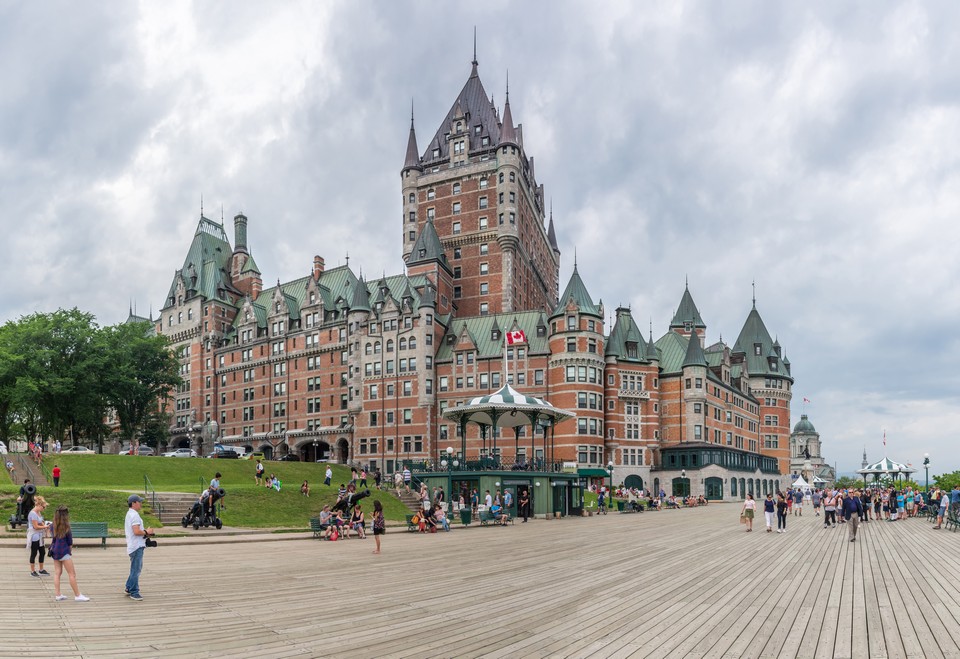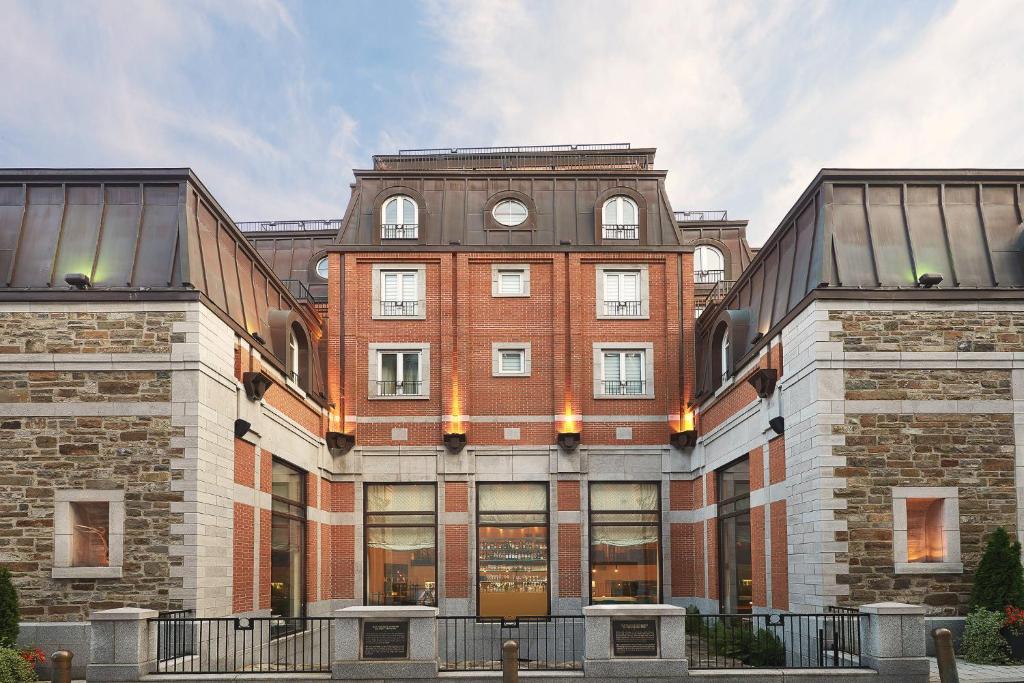Quebec dubbed the “Old Town of Europe on American soil”. This is a political center, a miniature France of Canada that you will feel the antiquity when you set foot in. Do you love the charming city of Quebec, like its bustling, vibrant and beautiful landscapes, attractive tourist places? And do you want to set foot in this land in one day? So, before you come, let’s pocket the Quebec travel experiences that have been compiled from the travelers who once visit here to have the most enjoyable and perfect trip. So, what to do and how to plan a perfect budget trip to Quebec city, Canada for the first-time? Let’s check out our Quebec city blog (Quebec city travel blog, Quebec travel blog) with the fullest Quebec city travel guide (Quebec city guide, Quebec city tourist guide, Quebec city visitor guide, Quebec travel guide) from how to get there, best time to come, where to stay, best places to visit and top things to do to find out the answer!
- Visit Quebec and explore the fascinating Quebec Winter Carnival
- What to buy in Vancouver? — 11+ must-buy gifts, souvenirs & best things to buy in Vancouver
- What to buy in Canada? — Top 17+ gifts & best things to buy in Canada
- Kowloon nightlife guide — 8 must-go & best best bars in Kowloon, Hong Kong
- Calgary travel blog — The fullest Calgary guide & what to do in Calgary for first-timers
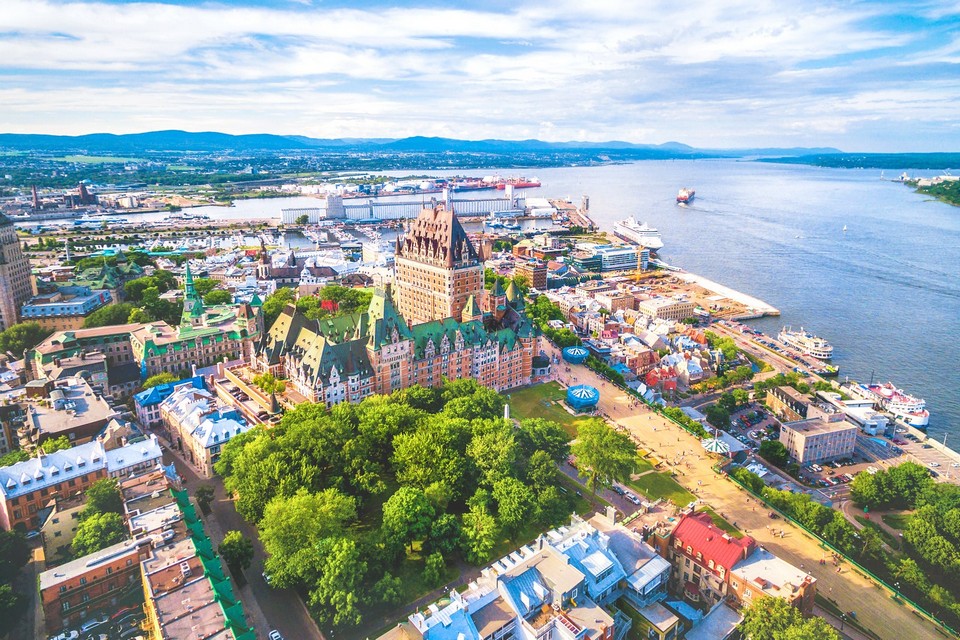
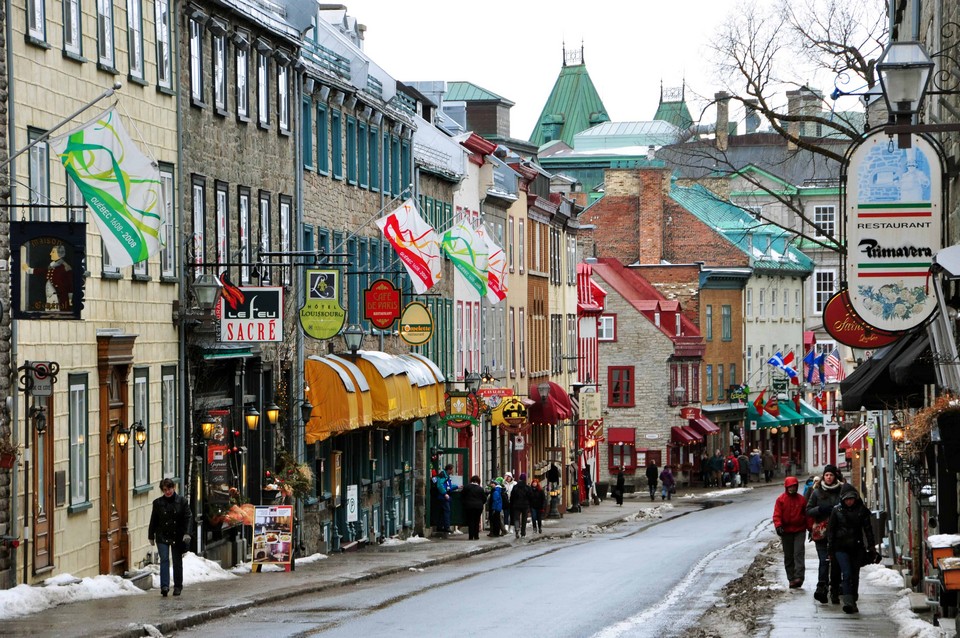
Note: Do not confuse the province of Quebec with Quebec City. The province of Quebec, located in the northeast of Canada, occupies nearly one-sixth of Canada’s total land area, making it the largest of Canada’s 10 provinces by area and second only to Ontario in terms of population. The capital of the province of Quebec, Quebec City is the oldest city in Canada. The majority of Quebec’s population lives in the southern regions of the province where temperatures are warmer and the St. Lawrence river is the source of water and rich soil for its inhabitants.
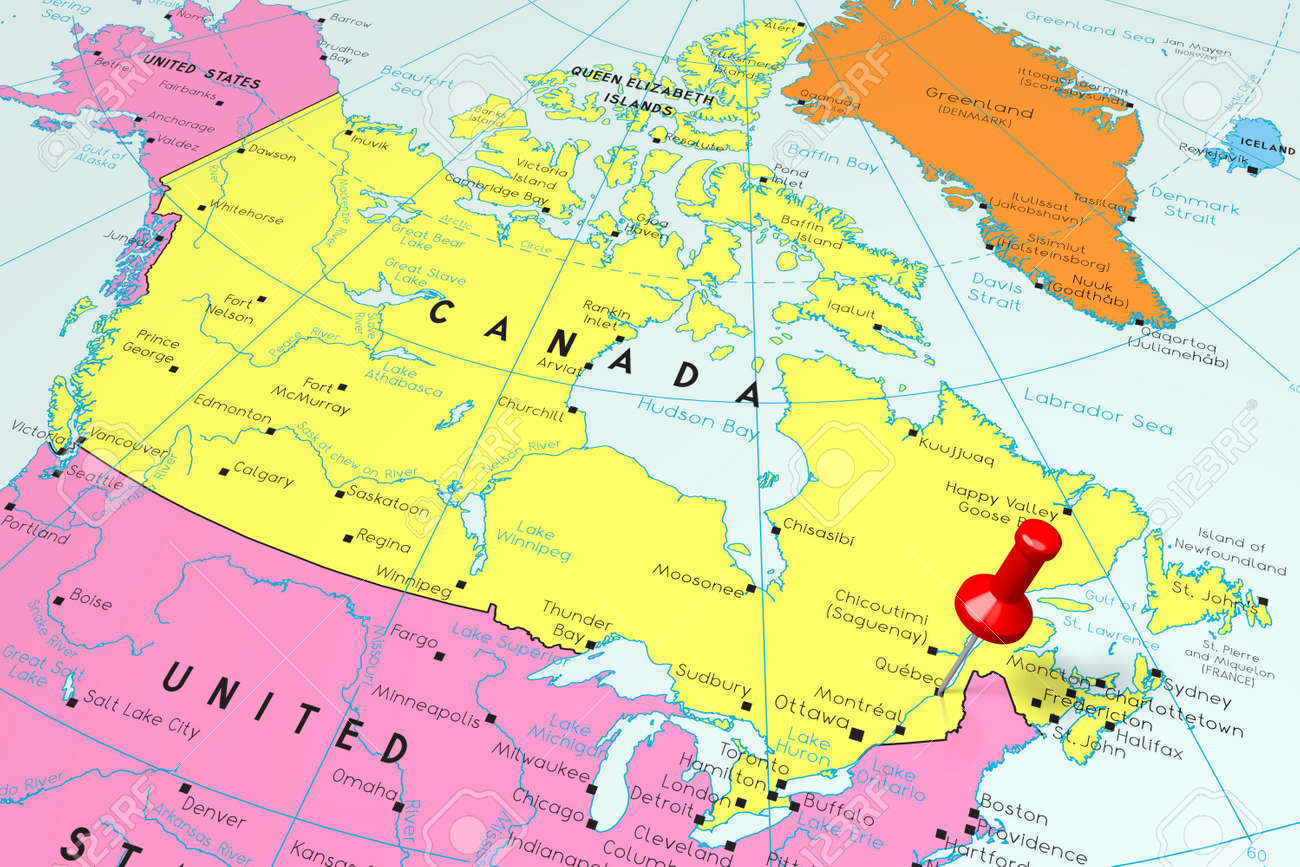
Quebec city blog: Overview of Quebec city
The Canada’s oldest city
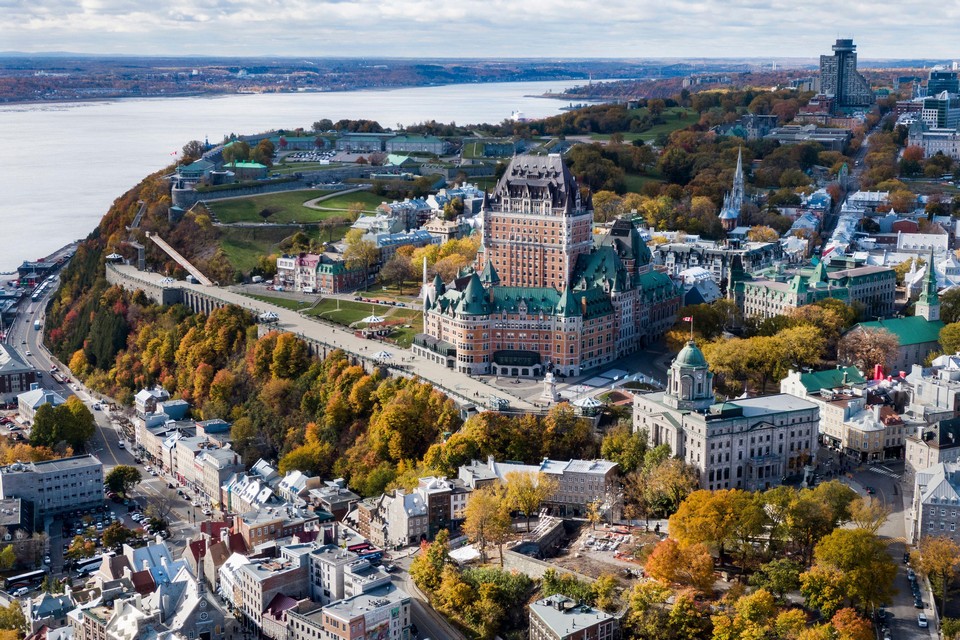
Before visiting, we also learned a little about Quebec. In 1935, the French maritime explorer Jacques Cartier came to this land and called it New France (Nouvelle France). At that time, this place was called Stadacona with about 1,000 natives of the Iroquois and Algonquin Indian tribes. Because of local resistance and severe winter weather, Jacques Cartier eventually had to return to France.
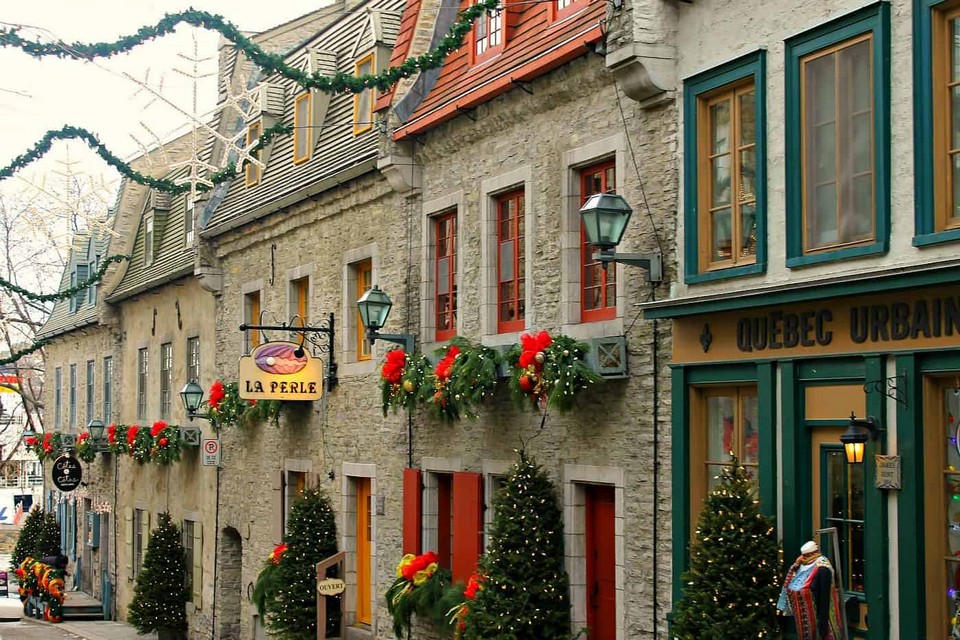
More than half a century later, it was the French explorer Samuel de Champlain who actually had started to build Quebec City in 1608. Champlain was honored as the “Father of the New France”, becoming governor-general who ruled the territory until his death in 1635.
Later, through many wars, the British defeated the French and took possession of the Canadian territory. France lost its right to rule the Quebec region, but more than half a million French here still maintain French cultural traditions and activities.

The “Special Status” of Quebec City
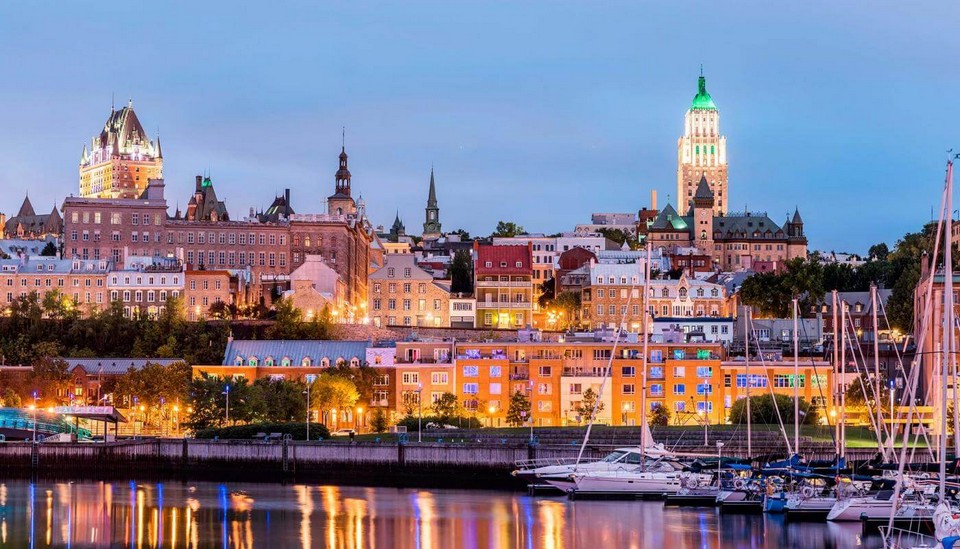
Currently, in a unified Canada, the province of Quebec is granted a “special status” with its own culture, language, and customs. On November 27, 2006, the Parliament of Canada passed a motion to recognize “the people of Quebec (Quebecois ) form a nation within a united Canada”. The province of Quebec has a population of around 8.4 million, while Quebec City has a population of nearly 833,000 (2022).
Language
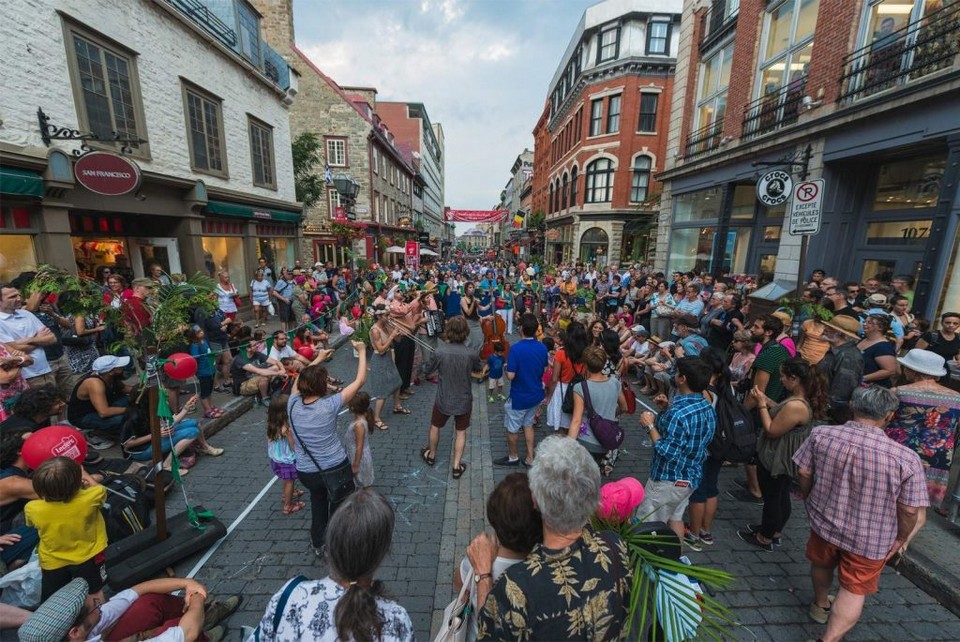
In Quebec, the most commonly used language is French, but in the tourist center, you can use English to communicate regularly. If you want to learn a few French words to satisfy your curiosity, you can learn some common French phrases or sentences when traveling to Montreal, Quebec.
Quebec city blog: When should you visit Quebec?
Someone once asked me which season of the year is the most beautiful to travel to Quebec, and I replied that every season in Quebec is beautiful, each season has its own beauty with different landscapes but all are extremely beautiful. In spring, the trees are lush and the flowers are blooming everywhere, in the summer the sun shines brightly to adorn the bright space, in the autumn is filled with red maple leaves, and in the winter is pure white snow. So, you can visit Quebec City at any time of the year. But if you are a lover of summer weather with lively outdoor parties or art shows, then go in July. However, the best time to visit Quebec that is in the winter when you can take part in winter activities such as skiing, snowmobiles, ice fishing, participate in winter festivals…

Festivals in Quebec
Festivals and parties are an important part of experiencing Quebec’s fun life. Winters in Quebec get chilly, so people often celebrate the Carnaval du Quebec (Quebec Winter Carnival), a week of snowy fun in Quebec City every February, to stay warm and happy. The festival’s mascot, the snowman Bonhomme, is a beloved Quebecois figure leading the daily Carnaval Parades through the city.
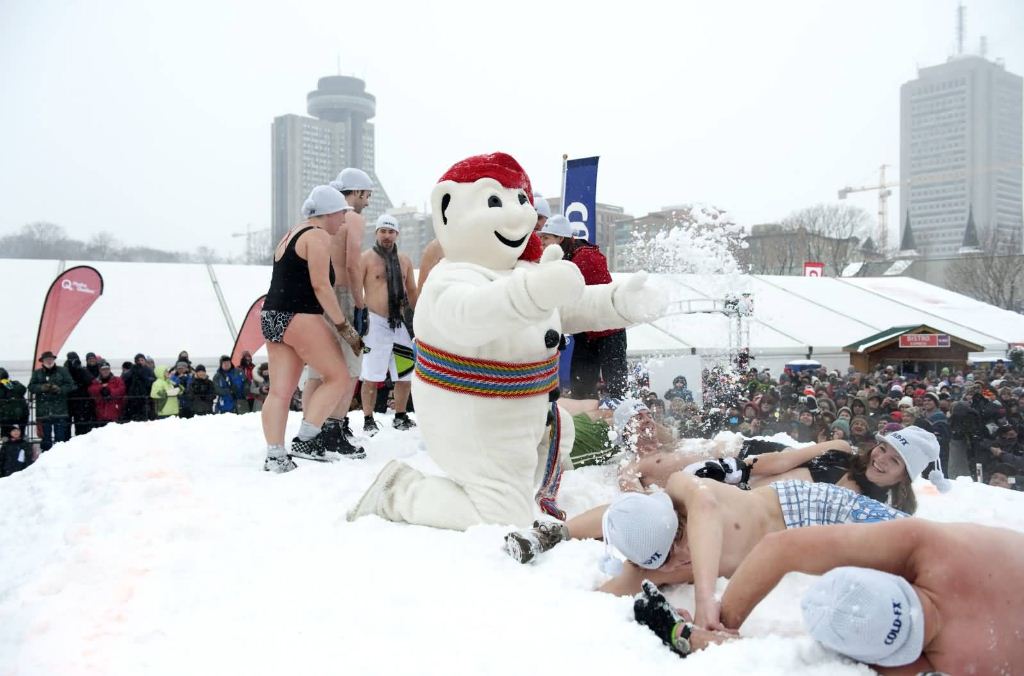
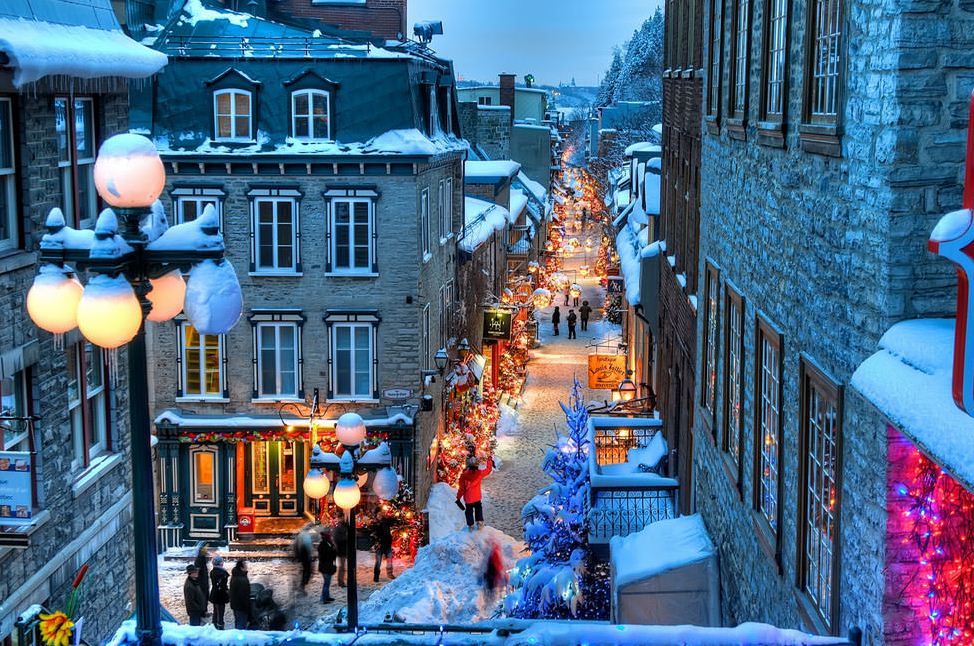

Quebec is also home to famous international events, such as the largest international comedy festival Just for Laughs, as well as the largest jazz festival in the world, Jazz Fest, Cirque du Soleil. The gymnastics and world-touring circus theater, is another Quebec creation. Many music, food, and arts festivals take place in cities across Quebec throughout the year, so there’s always celebration.
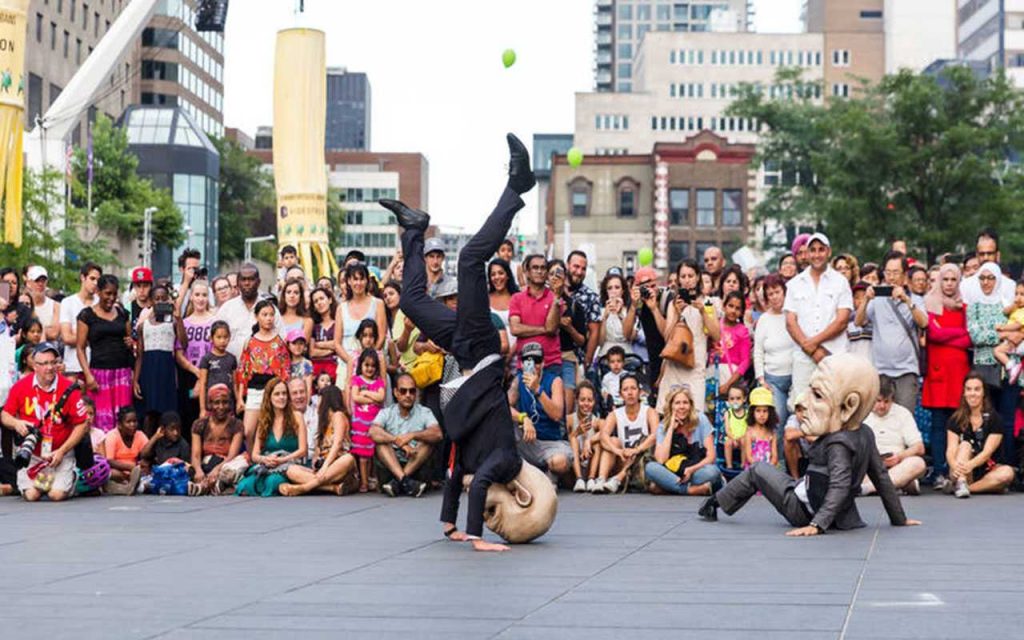
Quebec city travel guide: Getting to Quebec
From Toronto to Quebec
All flights to Quebec will land at Quebec City Jean Lesage International Airport (YQB).
I went from Toronto straight to Quebec City by Air Canada, it only took me nearly 2 hours to get there. One thing to note is that if you buy tickets on Air Canada and book with the hotel, you will get a lot of good deals. But after arriving at the Quebec airport, you should take a taxi or Uber to the city center instead of bus ($34.25/trip), because bus 78 only runs from Monday to Friday with the last trip at 4:30PM, quite inconvenient.
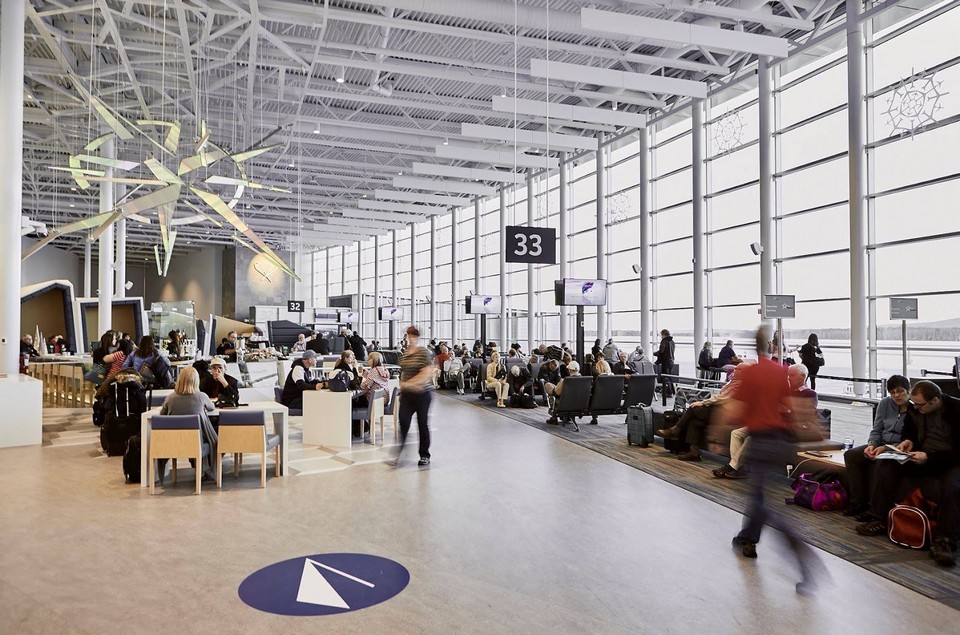
When I arrived at Quebec airport (YQB), it was a bit early, so I decided to walk to pick up bus 79, then pick up 80 and 800 to go back to the hotel, riding while enjoying the view. It took about 2 hours. Although I came to this city for the first time, fortunately I did not get lost. Thanks Google Maps 🙂
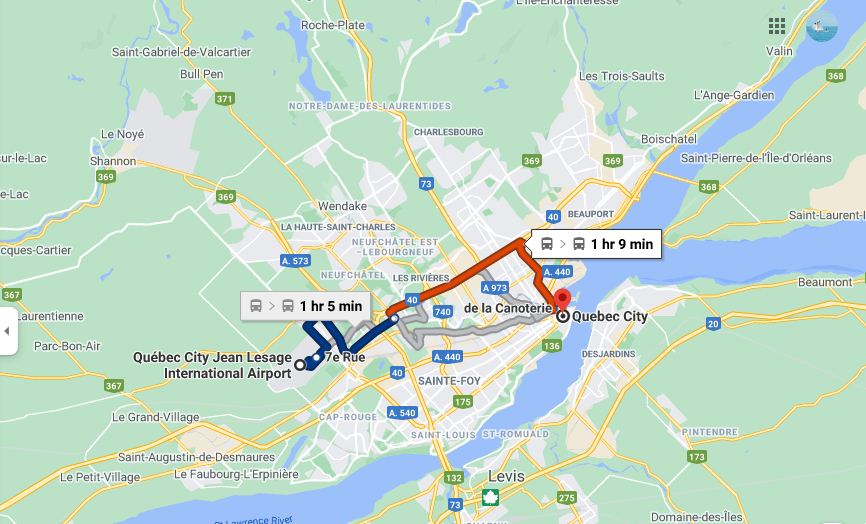
In addition, if you have abundant time, you can go from Toronto to Montreal. Then from Montreal buy a ticket to Quebec. Although it takes a lot of time, more than 9 hours, but it is much more saving than going by plane. If you are strong, it should take this way. You will have a comfortable travel time in two famous cities in Quebec.
Quebec Canada travel guide: Getting around Quebec

Exploring Quebec, walking is the most relaxing and economical way of travel. Renting a car in the morning and sometimes find a parking space in the center, it’s already dark, unless you want to travel to suburban areas.
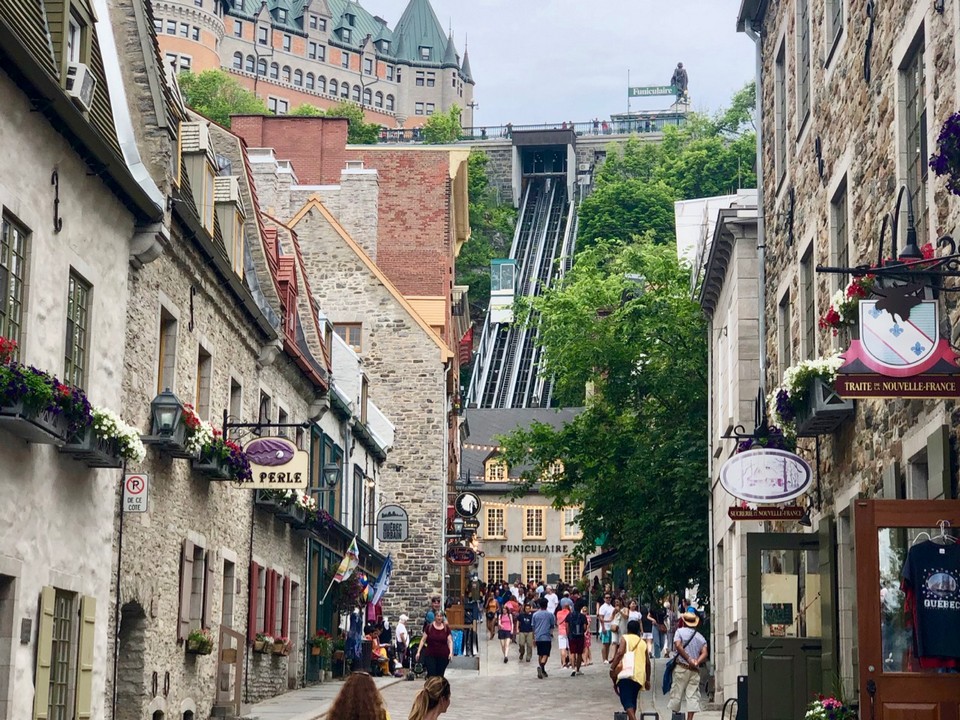
Bus is also a fairly common means of transport, but the waiting is tiring. The price for each trip is $3.5CAD or buying a day ticket costs about $8.5CAD. If you want to know where to buy tickets, you can check on the RTCQuebec website.
In addition, taxis and Uber are also quite good means of commuting. Before I came, rumor has it that this service has left Quebec, but when I opened the app and see it running as usual.

Quebec city blog: Where to go, what to do?
Old Quebec (Quebec City Old Town)
Quebec is divided into two distinct parts: The modern district and the Old Town. We stayed at a hotel in a modern neighborhood, where there are many high-rise buildings, bank headquarters, corporate offices, government offices, like other cities in North America. The focus of our visit is the old town, which has been recognized as a UNESCO World Heritage Sites since 1985. One thing in particular that makes the landscape of the old town of Quebec is unique, that is it was divided into two areas: The Upper Town (Haute-Ville) and the Lower Town (Basse-Ville). The entire Old Town has an area of 11km2, this is a special feature of Québec, creating a unique, strange and attractive beauty that few cities in the world have.
Upper Town
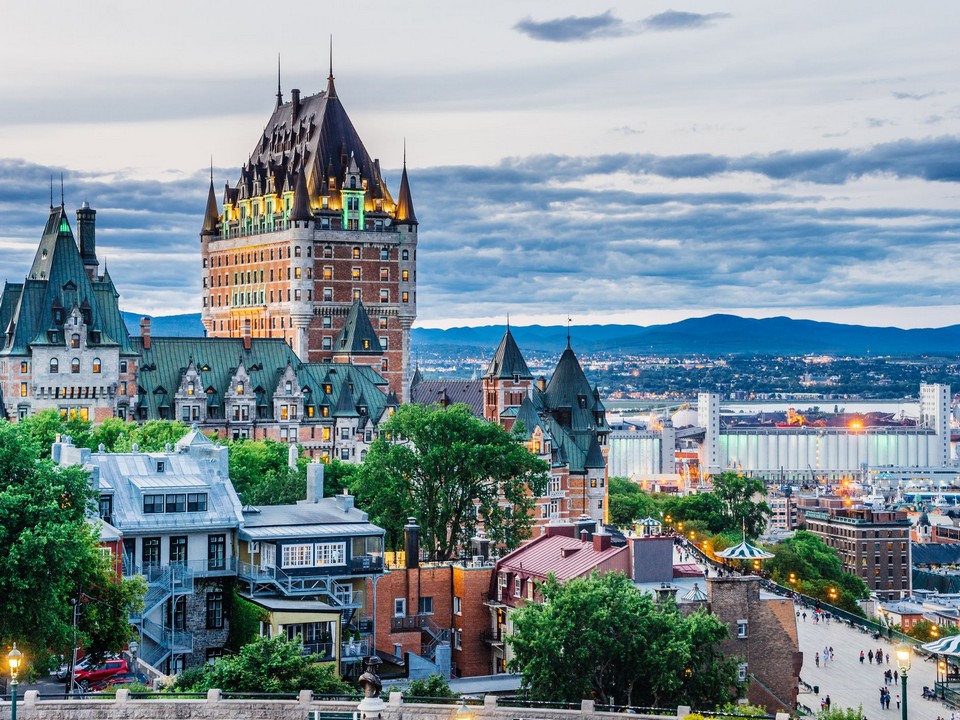
Upper Town, or Haute-Ville in French, is located on Cape Diamond, with craggy cliffs. Standing here, looking down, visitors can look directly down the Saint Lawrence river that surrounds part of the city and the vast unspoiled fields stretching far into the distance.
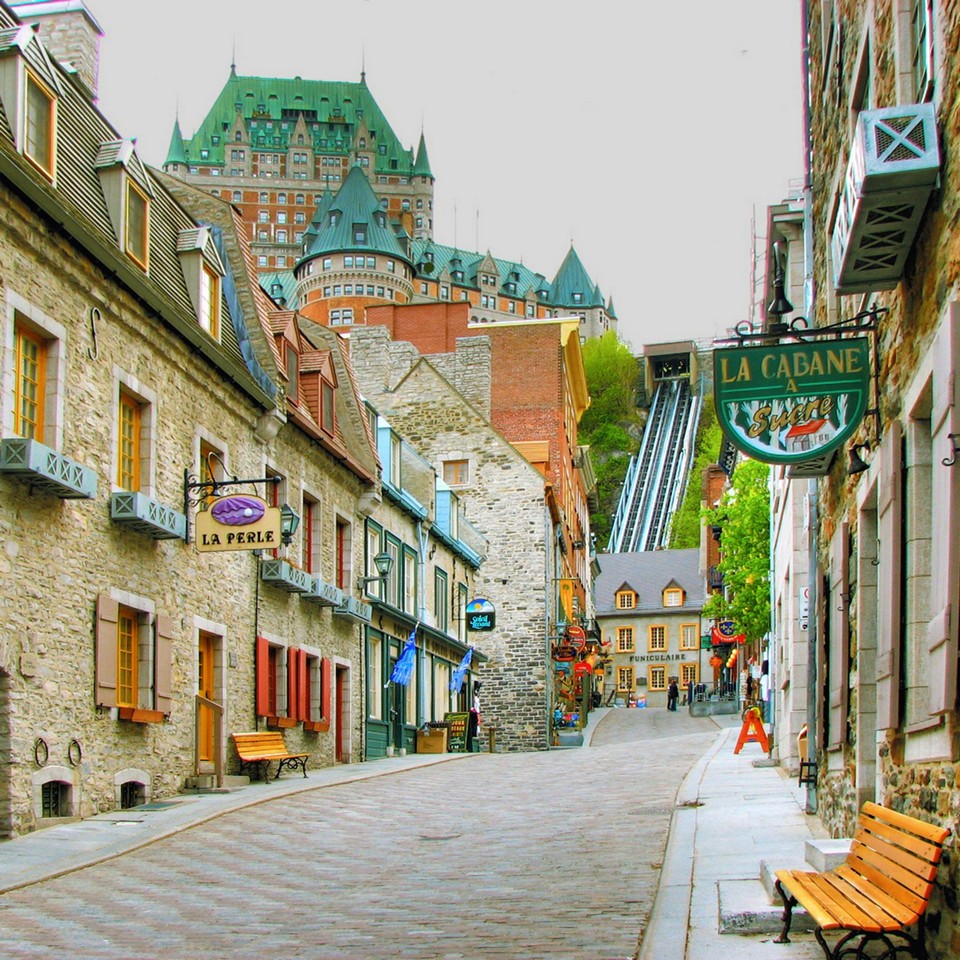
Upper Town is extremely crowded and bustling, on both sides of the road are houses with bold European architecture mixed with bakeries, eateries, cafes, lovely souvenir shops crowded with people in and out.
Upper Town has typical European-style castle architectural style of the 17th and 18th centuries, with outstanding works such as Dufferin Terrace, Château Frontenac castle, City Hall, Notre-Dame de Québec Basilica-Cathedral, Laval University… and especially in the center of Upper Town still stand two black bronze statues up to 15 meters high with sculptures of Jacques Cartier and Samuel de Champlain – two French explorers who had great merits in giving birth to this land.
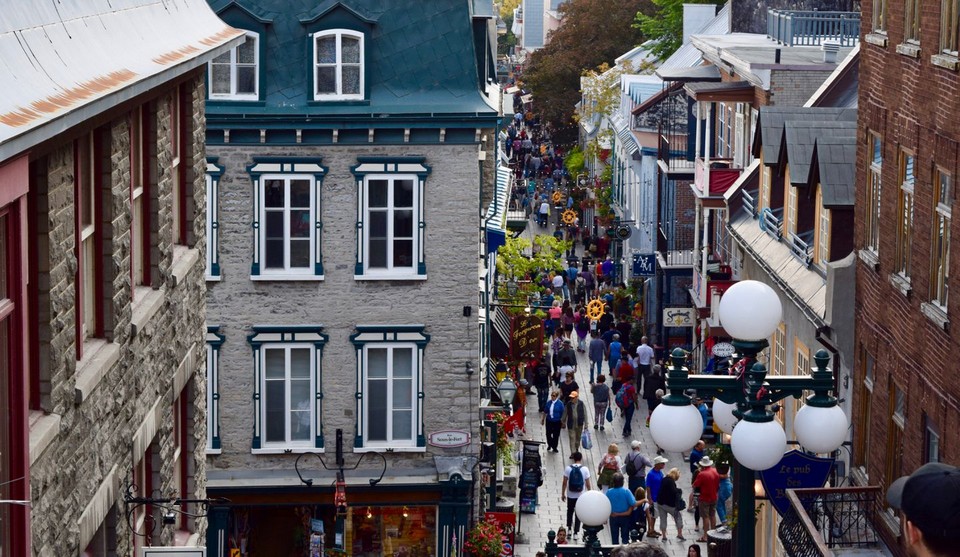
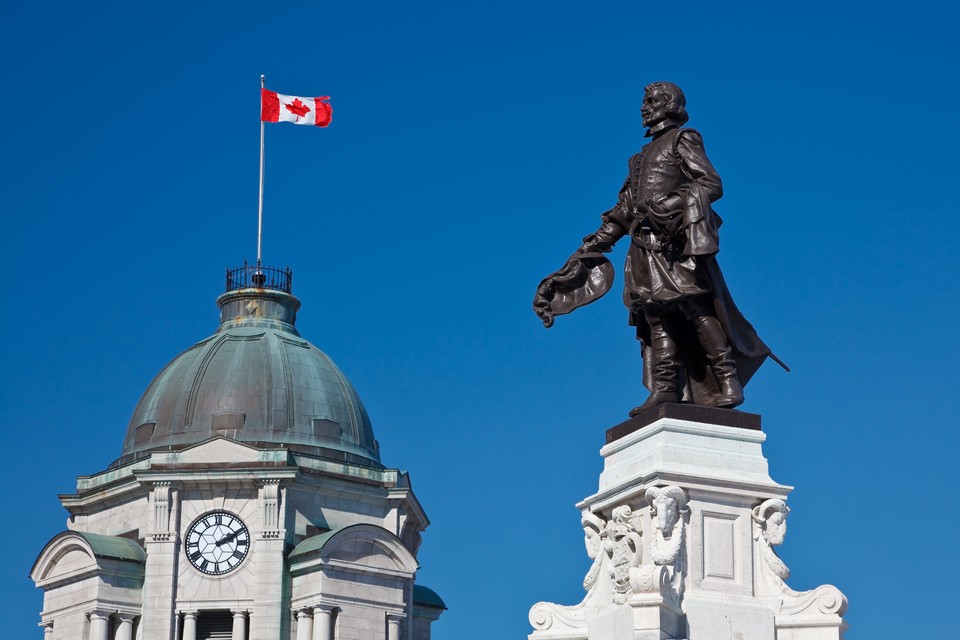
It would be wonderful to strolling around Quebec old town on a snowy winter day, holding a warm cup of coffee to enjoy while wriggling through the small alleys. The old red brick walls, or the moss-colored stone works of the time, or the small houses with lovely flower trellises by the windows… are the most beautiful scenes of Upper Town.
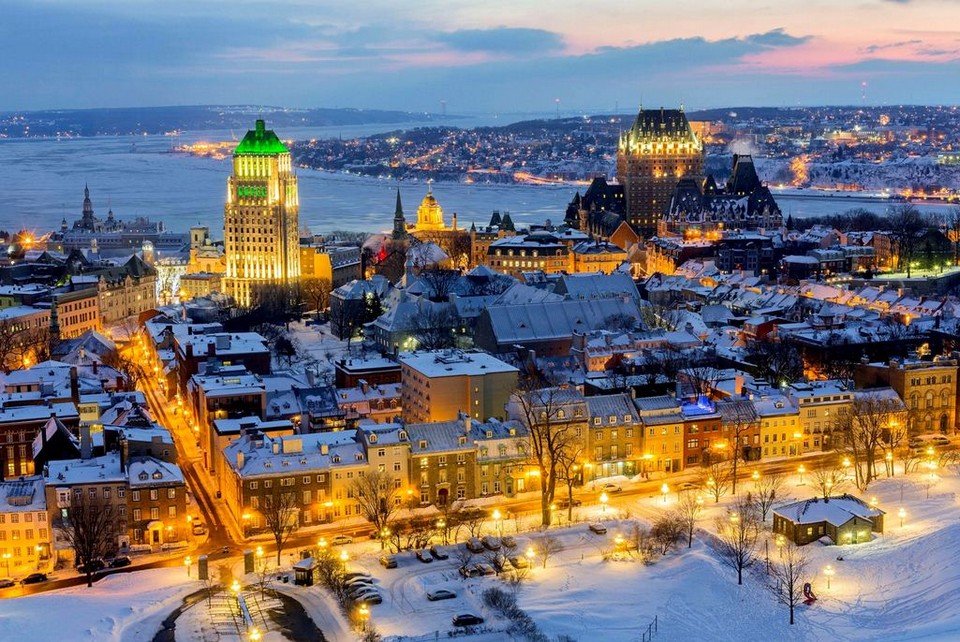
Lower Town
Below the Upper Town is the Lower Town (Basse-Ville). The fastest and most convenient way to get down to Lower Town is to sit in the Funicular cabin and slide down the steep slopes, sitting inside the cabin you can enjoy the wonderful scenery of Québec. Alternatively, visitors can walk along the terraced path to go down, quite laborious, but in return it is a new experience and is fully absorbed in the view of the city’s landscape without limit of vision.
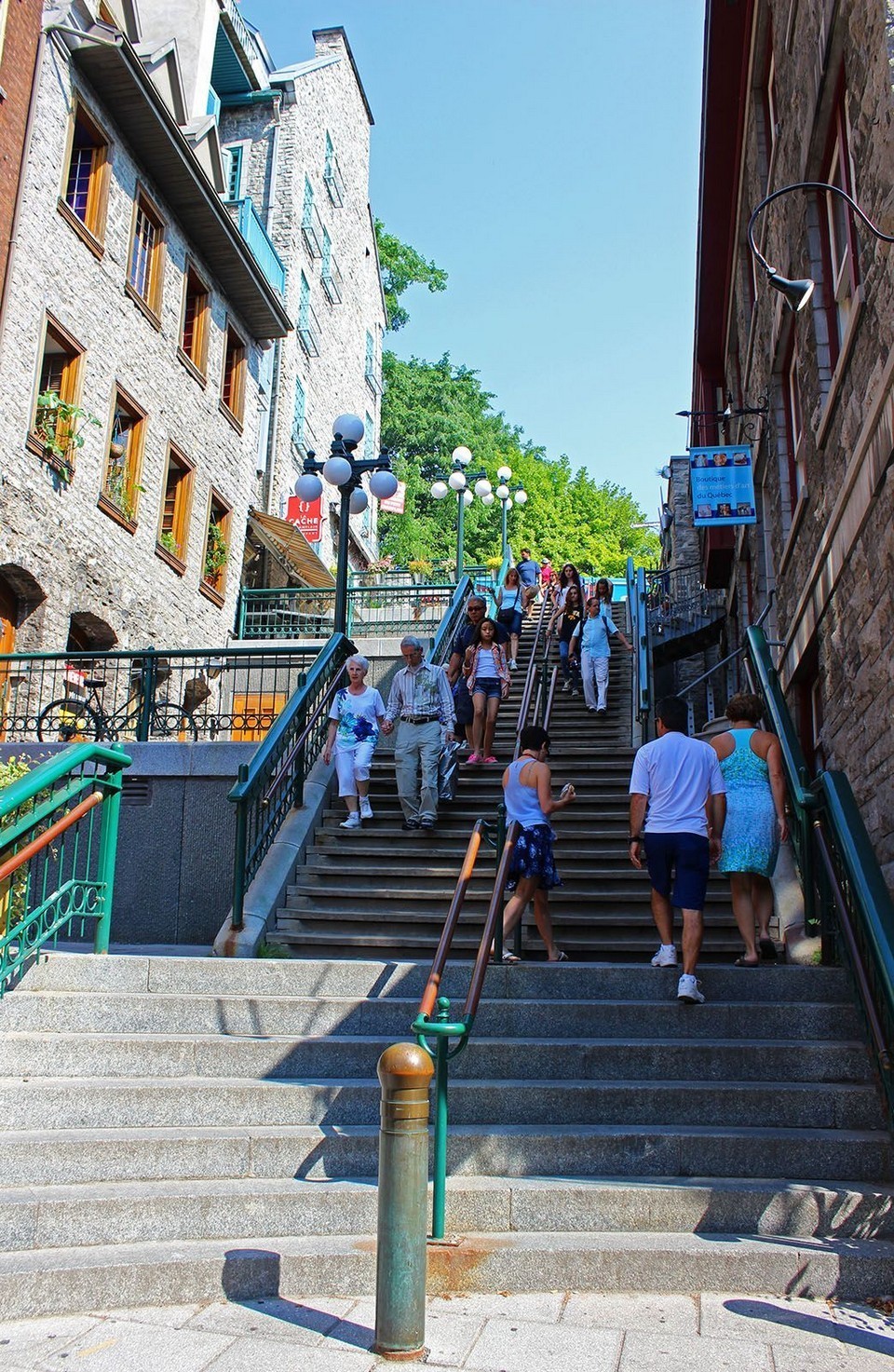
If Upper Town with magnificent castles, wide streets, then Lower Town is a place of idyllic beauty, full of vibrant life. The narrow, winding roads will lead visitors to extremely interesting and unexpected places. If you are a lover of exploration activities, you will find wriggling through these alleys extremely interesting.
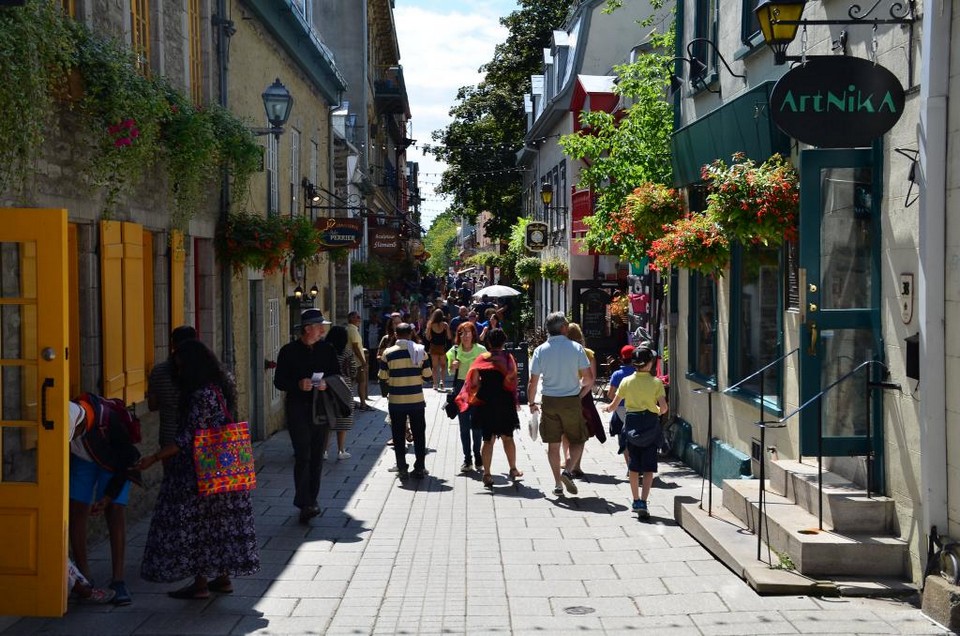
The atmosphere in Old Town is truly like a carnival. From a young age, I attended a French school, absorbing the humanistic culture of France, so anything related to France I feel very close to. So, for me personally, Quebec is very close. And compared to the Canadian cities I’ve visited (Vancouver, Victoria, Ottawa, Montreal, Toronto), I think Quebec is the most beautiful one.

Fairmont Le Château Frontenac
The castle Fairmont Le Château Frontenac, known locally as simply Frontenac Castle, was built for the Canadian Pacific Railway in 1894 and and is the heart of the Quebec city and the symbol of the nation of Canada. The castle is located in a favorable location, on the highest peak of the Cape Diamond, built in the 1990s. The castle has architectural style similar to European castles of previous centuries with copper pointed roofs.

Today the castle is a luxury hotel with 650 rooms, the resting place of many heads of state when visiting Canada. The castle is also known as the most photographed place in the world, the unique features of the castle are the walls, interior decorated with mosaics, fireplaces and stairs made of marble which originating from the Petit Trianon castle (Small castle on the grounds of Palace of Versailles for the mistress of King Louis XV, Madame de Pompadour lived).
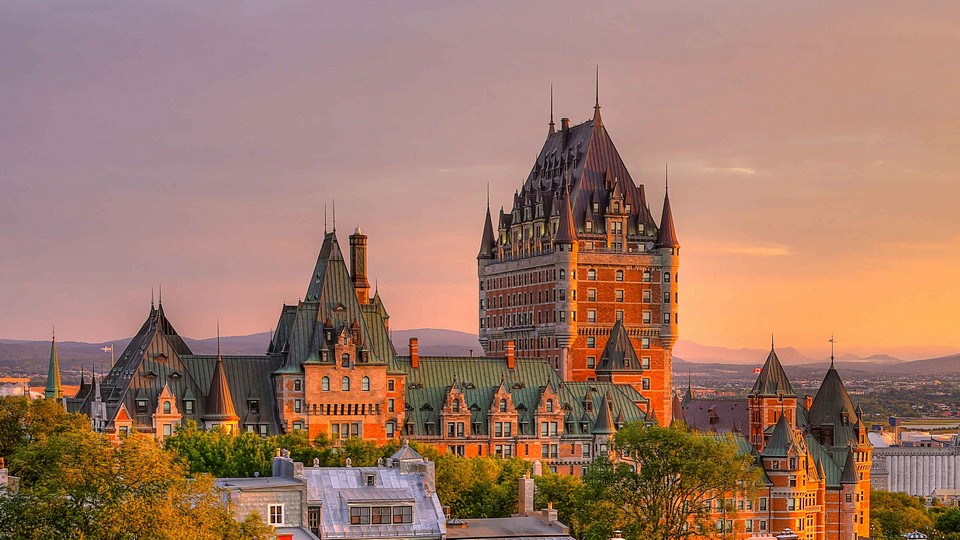
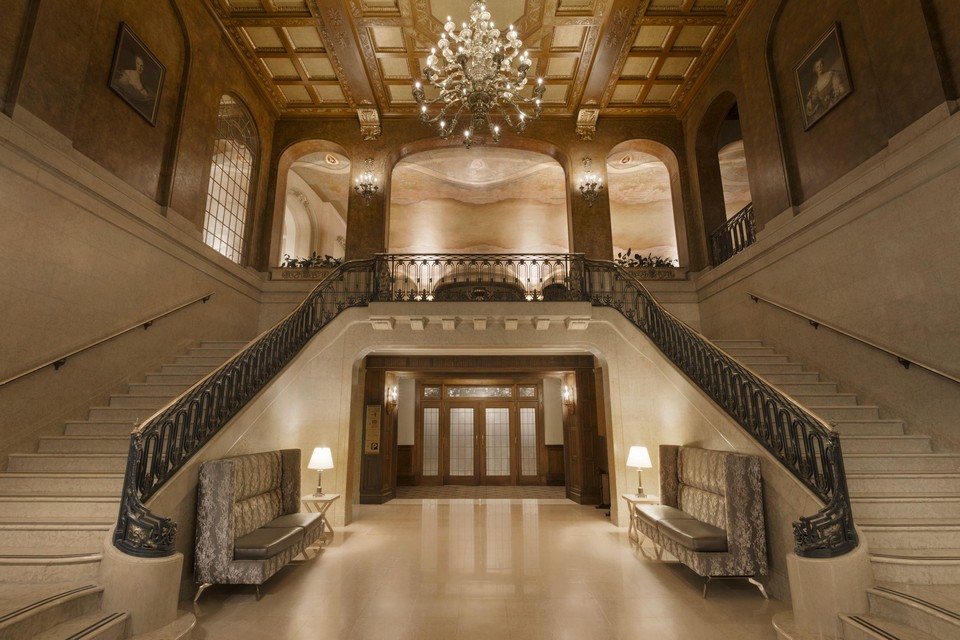
Frontenac is a popular and beloved gathering place for Quebec citizens. They often visit the castle every afternoon tea (Thursday and Saturday) or come to enjoy fruit drinks, famous Italian martinis in intimate evenings in the chain of hotels: Winston Churchill, FD Roosevelt and Maurice Duplessis of the castle. And especially, in front of the hotel is Terrasse Dufferin (Dufferin Terrace), with an elevated view of the St. Lawrence River. If you continue to go, it will lead to a trail extending to La Citadelle de Quebec and the Plains of Abraham.
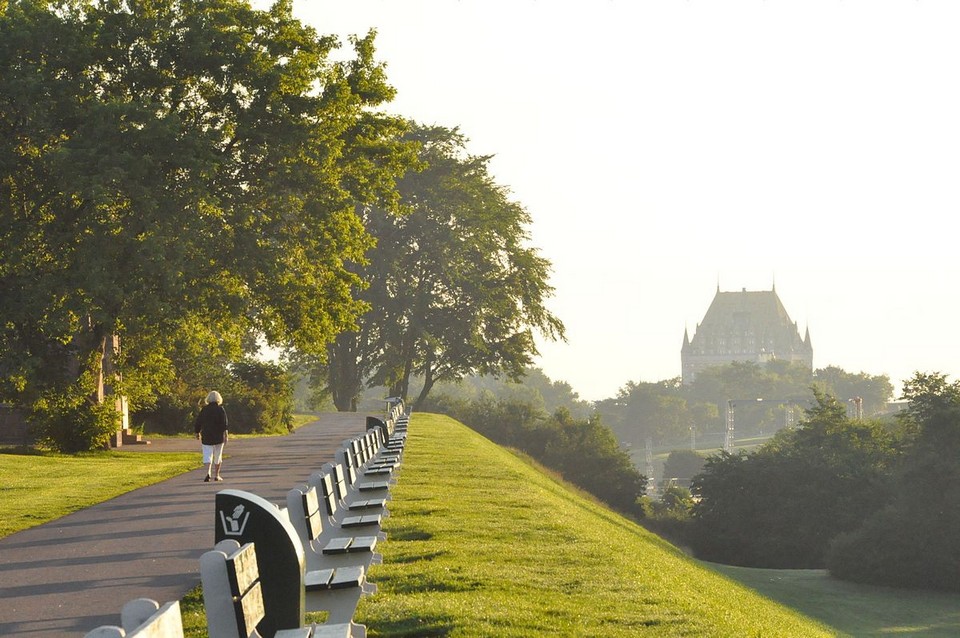
Address: 1 Rue des Carrières, Québec, QC G1R 4P5, Canada
Museum of Civilization (Musée de la civilisation)
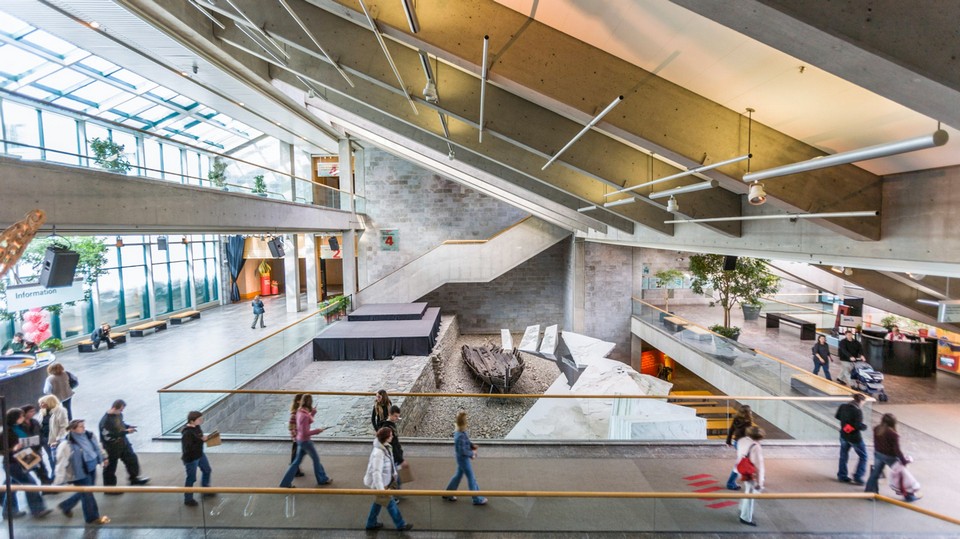
This is where I find it most interesting. The museum displays and teaches a lot about the history of human development and the founding of French America.
Address: 85 Rue Dalhousie, Québec, QC G1K 8R2, Canada
Hours: 10AM–5PM/Monday: Closed
Quebec National Museum of Fine Arts
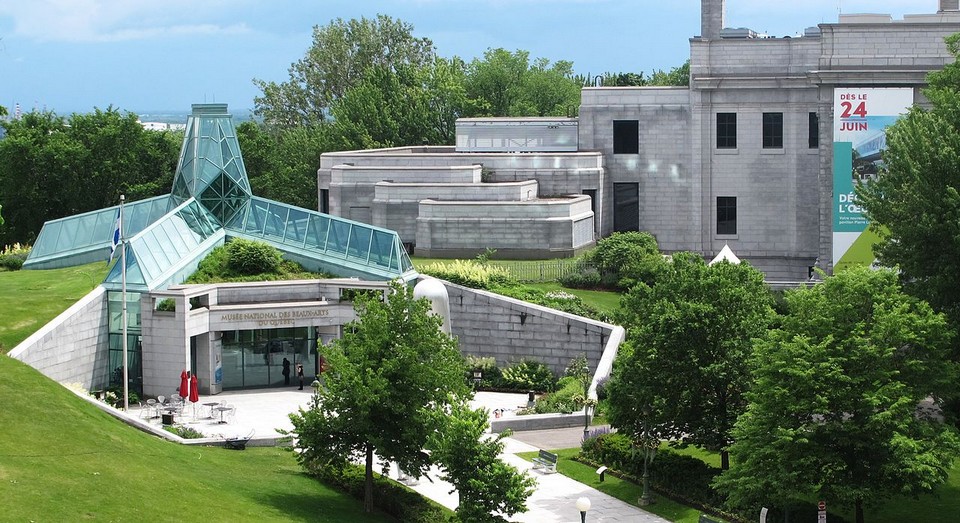
The Quebec National Museum of Fine Arts is said to be one of the most concentrated places of the visual arts industry. Here you will enjoy the contemporary exhibitions of famous artists or walk around the Battlefield Park and visit the Pavillon at the entrance that shaped like a star.
Address: 179 Grande Allée O, Québec, QC G1R 2H1, Canada
Hours: 10AM–5PM/Monday: Closed
Notre-Dame de Québec Basilica-Cathedral
This is a famous architecture in Quebec, designed by architect Charles Baillairgé and completed in 1844. The interior of the church is quite monumental with vivid paintings on the glass door frame and especially the golden statues (yellow, but I don’t know if it’s real gold or not :D) right in the middle of the hall.
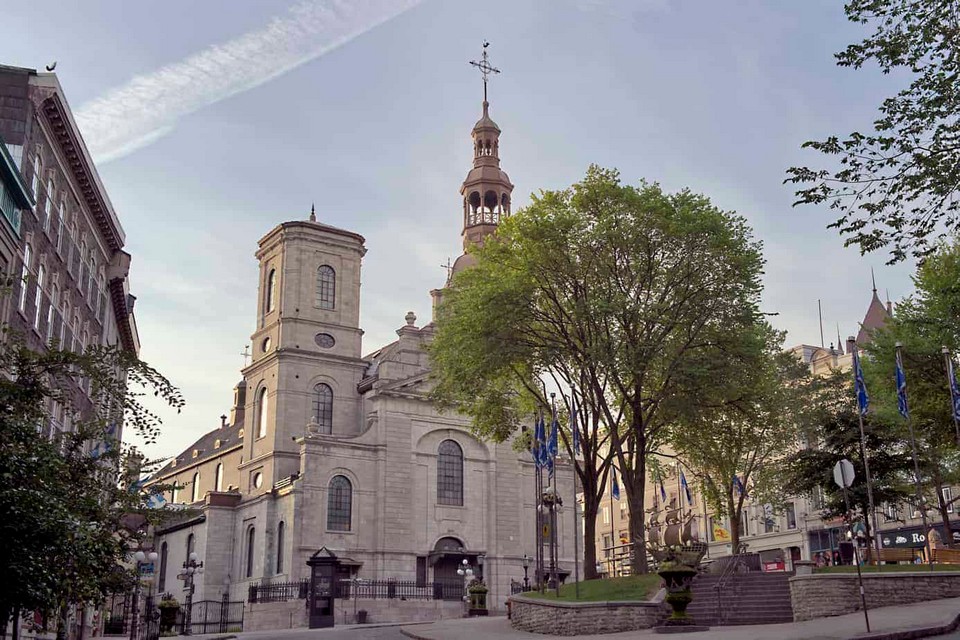
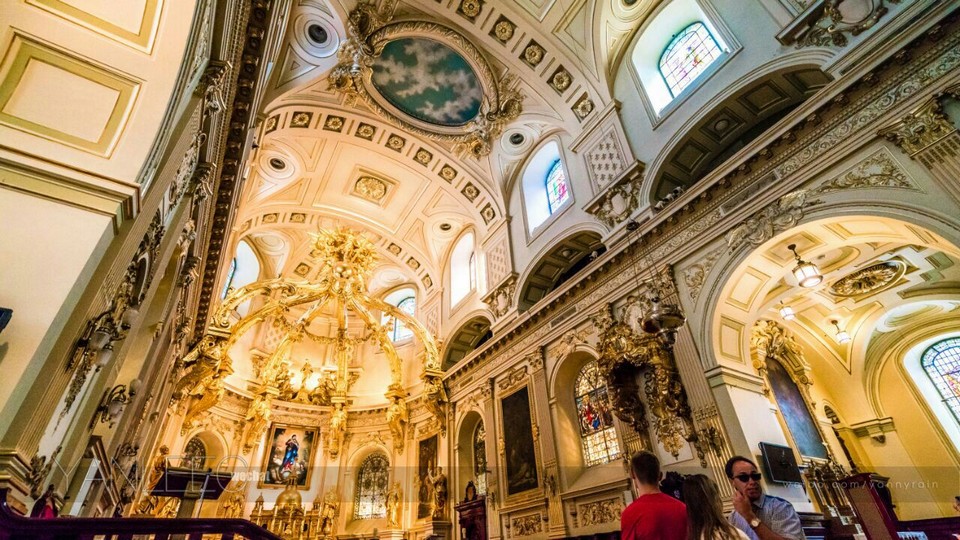
Address: 16 Rue De Buade, Québec, QC G1R 4A1, Canada
Citadelle of Quebec
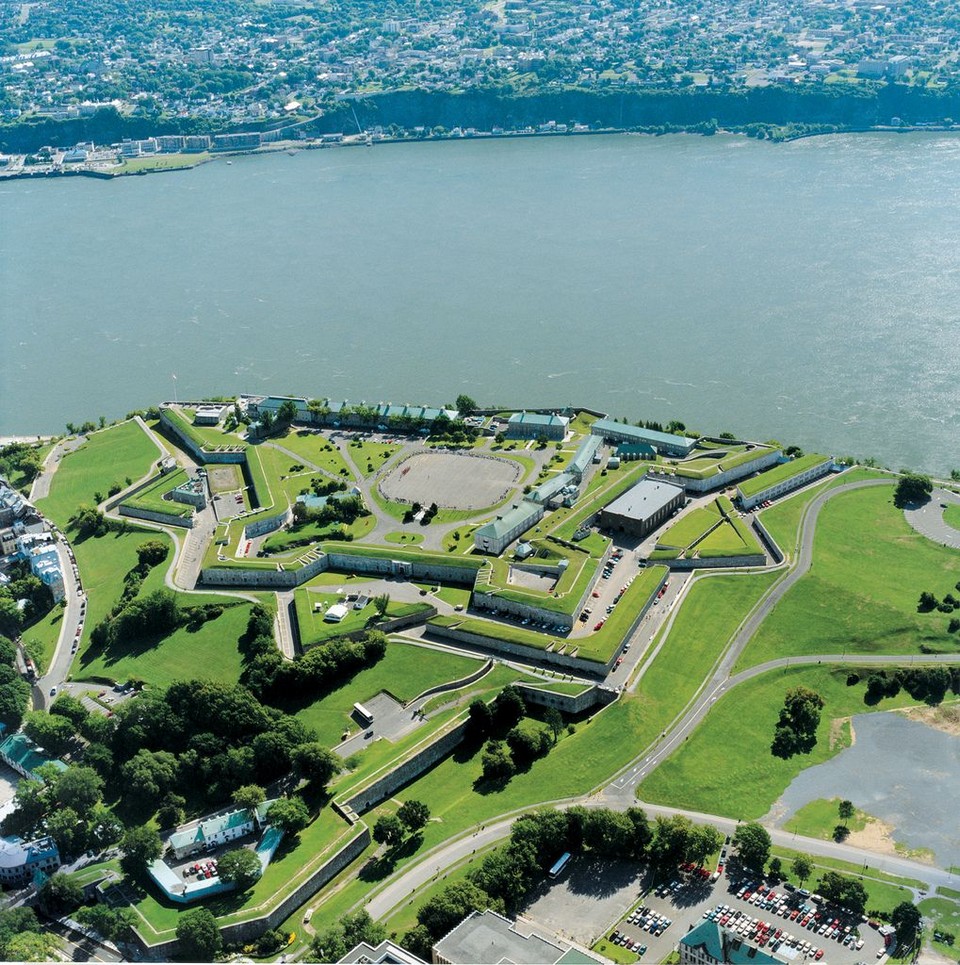
Located opposite the river St. Lawrence, this is a fortress built in 1832 and is still used today as a military base and also as a museum to welcome visitors.
Address: 1 Côte de la Citadelle, Québec, QC G1R 3R2, Canada
Hours: 10AM–5PM
Battlefields Park
Located to the west of La Citadelle, once where Great Britain, led by General James Wolfe, fought France and won in 1759. Currently used as a park for walks and exhibitions.

The park owns a very vast green space. Previously, this was the site of many battles between the French and British armies. Today, this is a great weekend relaxation place for locals and tourists alike. There are often many interesting outdoor activities taking place here: camping, music stage, children’s entertainment program… Especially in autumn, this is also an ideal place for you to admire the beauty of the forest of maple leaves changing their leaves.
Address: 835 Wilfrid-Laurier Ave, Quebec City, Quebec G1R 2L3, Canada
Hours: Open 24 hours
Holy Trinity Anglican Cathedral
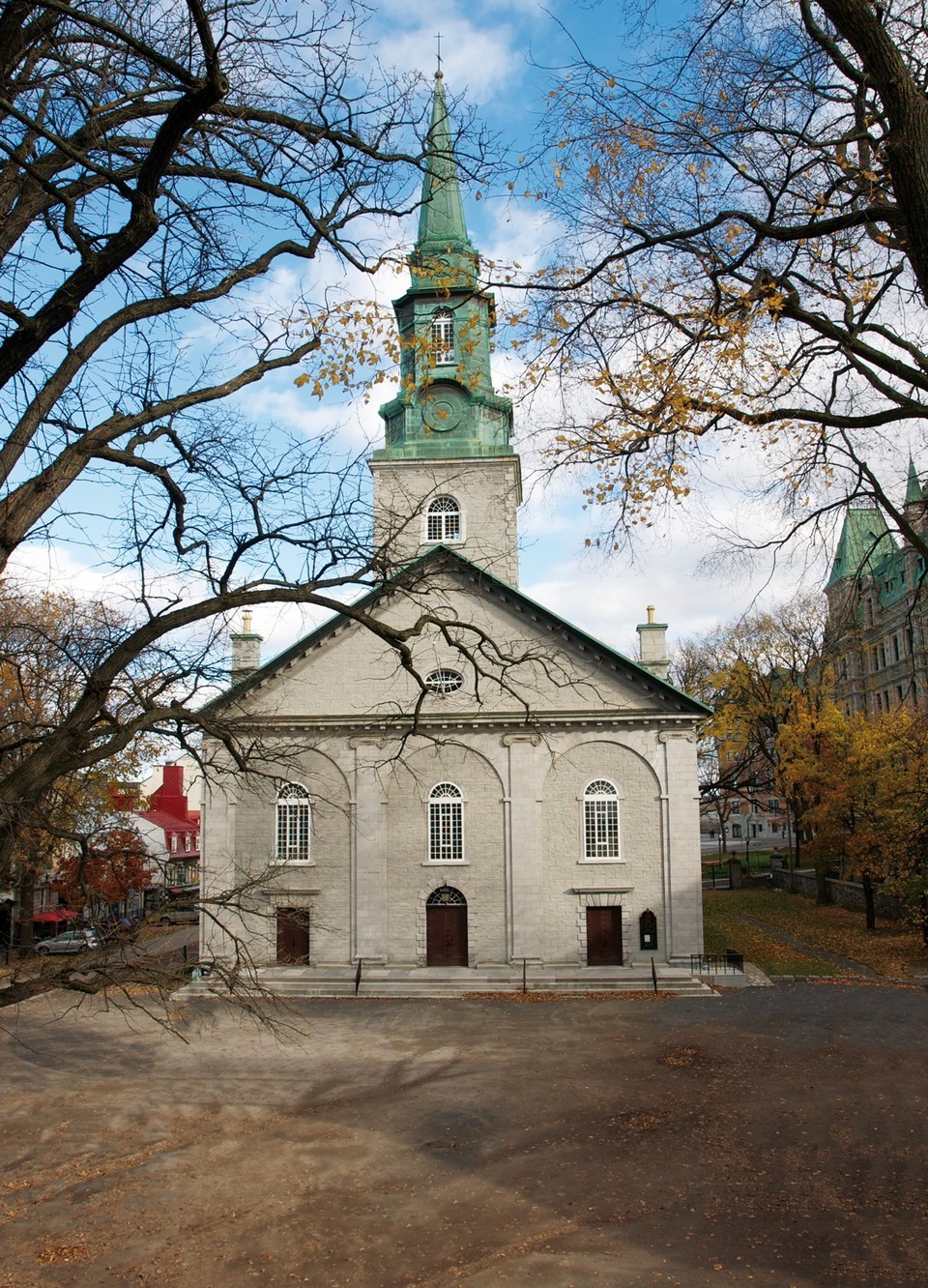
Started construction in 1800, Holy Trinity is considered the first British cathedral built outside the empire, although it is an English cathedral, Holy Trinity carries the breath of France and traditional religious practices all follow the French.
Address: 31 Rue des Jardins, Québec, QC G1R 5L3, Canada
Dufferin Square
Just a few steps outside the Frontenac hotel door is a large wooden pedestrian walkway called Dufferin Square that is considered the most important property of the city. Opposite Frontenac Castle, on the other side of Dufferin Square is a 15-meter-high statue of Samuel de Champlain – who officially started construction of Quebec City. The stone used to build the base of this statue resembles the Arc de Triomphe of Paris.
Strolling around Dufferin Square, visitors can admire some important architectural works such as the town hall built in 1896, Notre-Dame Cathedral built over 350 years ago in Baroque style, Laval University was built in 1949 (the first Francophone university in North America).
If you are an adventurous person, go to Dufferin Terrace. Here you can rent a sled that goes downhill at a speed as high as a car. Besides, you should also enjoy a special cocktail of mixologist Nader Chaabane at Le Sam Bistro to feel the vibrant life here.

Address: Rue des Carrières, Québec, QC G1R 5J5, Canada
Governor’s Garden
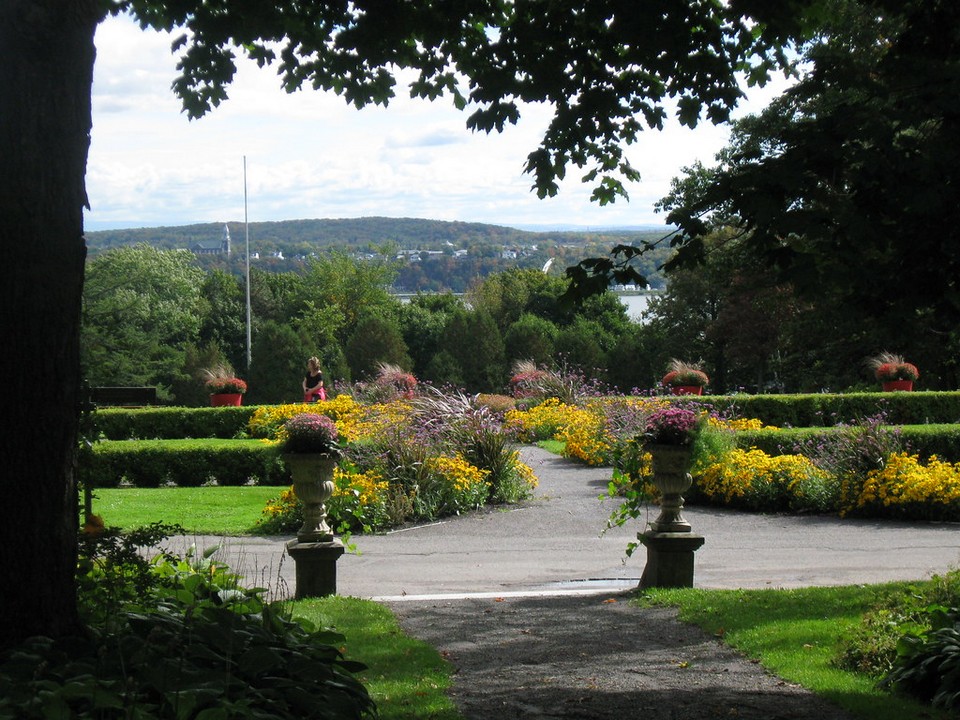
Governor’s Garden is a tranquil space, in a fresh green color, adjacent to Frontenac castle. During the 1640s, this garden, which was privately owned by governor Charles Jacques Huault de Montmagny, was always closed, but today it is a public garden that can be visited by anyone.
Address: 7 Rue des Carrières, Québec, QC G1R 5J5, Canada
La Maison Jacquet
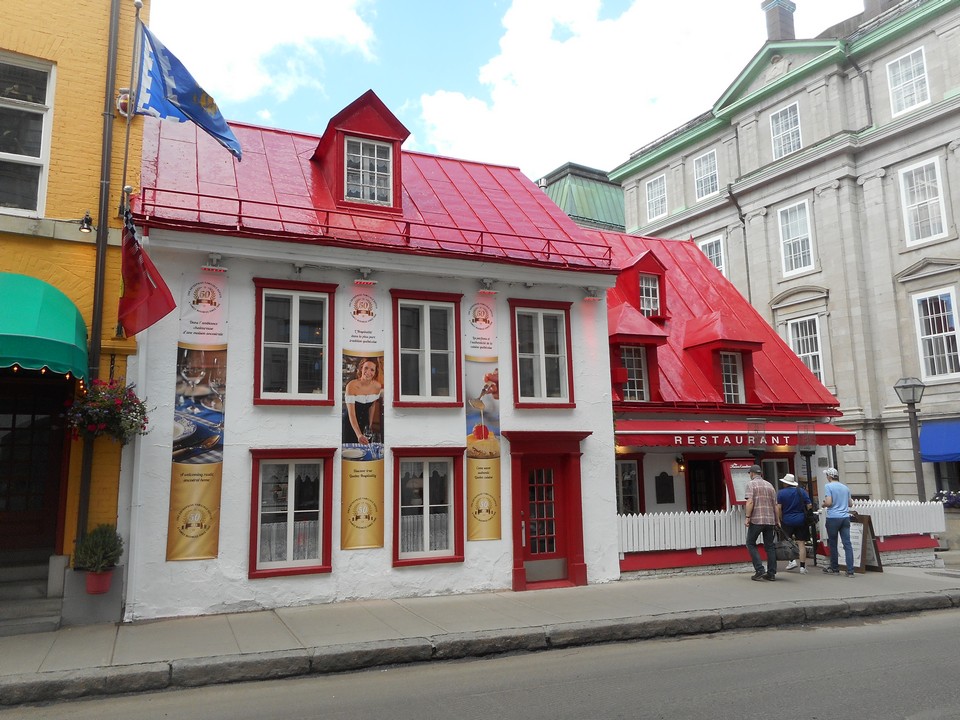
Jacquet House was built in 1675, the main color of the house is red and white and it is considered the oldest house in Québec city. Located at 34 Saint-Louis Street, Jacquet is now an old Canadian restaurant.
Augustinian Monastery
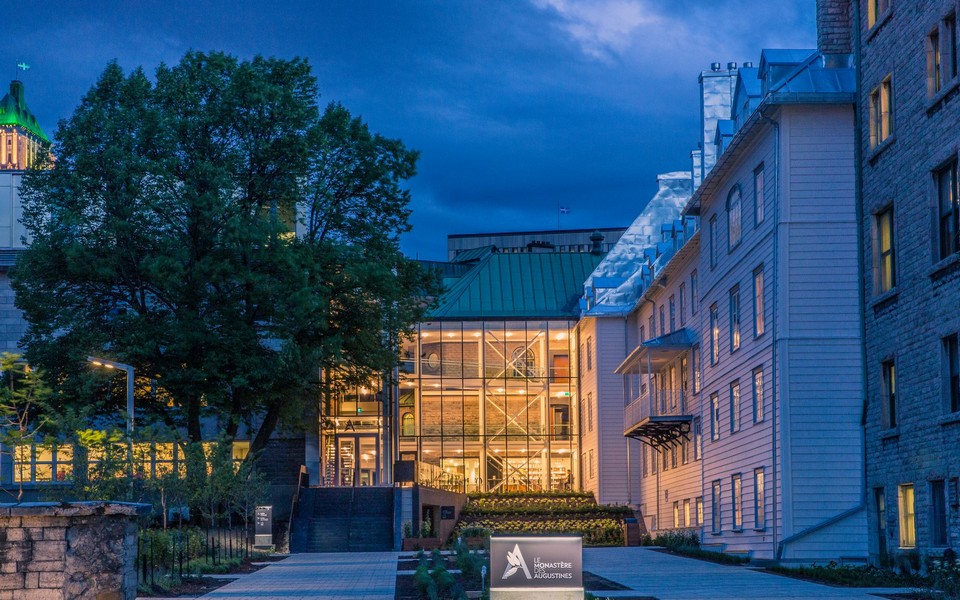
After opening in 1639, the monastery is one of Québec’s oldest institutions. At present, the monastery continues to maintain the same educational institution as in the early days of its founding, which is a convent school for nuns. Visiting the monastery’s museum, visitors will see firsthand the smooth and skillful embroidered products of gold and silver threads of the nuns here.
Address: 77 Rue des Remparts, Québec, QC G1R 0C3, Canada
Quartier Petit-Champlain
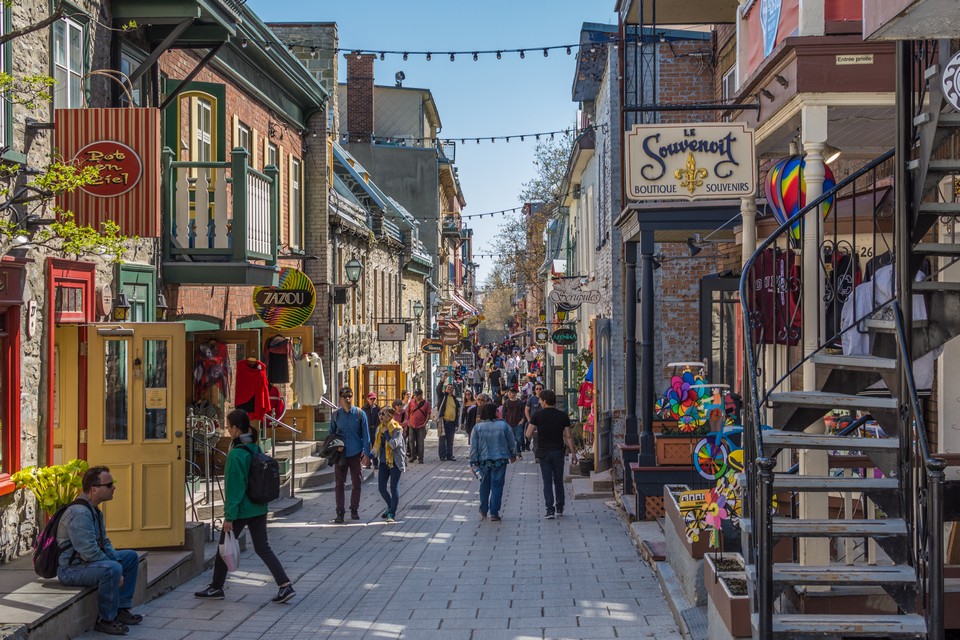
This is a small street below Dufferin Terrace, lined with souvenir shops, clothing, and many Quebec-flavored restaurants.
Parliament Hill
This is a majestic architecture that is also a famous tourist attraction in Quebec. Parliament Hill is inspired by the Louvre palace of Paris with the main facade of the Tourny fountain. Here you can visit, admire this unique work and take photos. The building is a magnificent structure consisting of four massive wings that is one of the clearest examples of North America’s Second Empire architectural style (an architectural style that prevailed in Europe and North America between 1865 and 1880).
This parliament building is also considered the heart of Québec, the most important historical monument representing the city. The impressive exterior of the parliament building is easy to see, the facade is decorated with 26 bronze statues honoring the people who helped shape Québec society and the Fountain of Tourny marks the entrance (here is a gift to celebrate the 400th anniversary of the city’s founding). Visiting the parliament building, you should observe the signs placed in the entrance directions, in 4 languages: English, French, Spanish and Italian.
Édifice Marie-Guyart Observatory

The National Observatory is located at an altitude of 132 m. Standing on this observatory on the 31st floor of the Marie – Guyart building, through the glass walls you can admire the breathtaking view of the whole city. Admire the labyrinth of streets and rivers that surround the majestic mountains.
There are also a few other interesting things to explore such as the Quebec-Levis ferry that runs on the St. Lawrence, farmers market near Old Port (View Port), Quebec Bridge (Pont de Québec).
Quebec city blog: What and where to eat?
Quebec’s cuisine is full of Canadian cuisine, to have a memorable trip and fill your stomach, remember to enjoy these dishes:
- Fresh seafood: Mussels, salmon, lobster, shrimp, crab, scallops,..
- Poutine: French fries covered in cheese curds and sauces.
- Maple syrup: A syrup commonly used to drizzle over pancakes or French toast.
- Nanaimo bar: Extremely sweet chocolate chip cookies layered with vanilla or buttermilk custard and chocolate toppings.
- Montreal bacon: Bacon is often piled up in a sandwich that comes with mustard.
- BC rolls: British Columbian specialties include sushi rolls with rice, seaweed, grilled salmon and cucumbers.
My first impression when coming to the center of Quebec City is that the food is full of Pizza, pasta, steak, hamburger… The price for the main dish is about $25CAD or more. If you can afford it, it’s fine, but for me, the luxury restaurants in the tourist center are not as interesting as the small restaurants that the locals often frequent come.
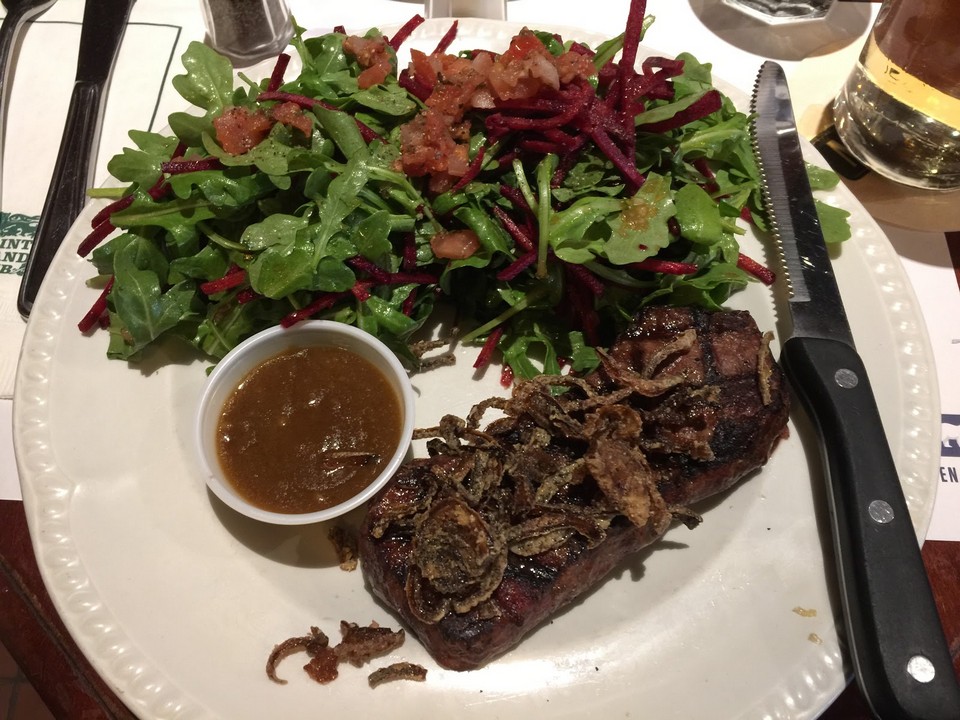
In addition, my Asian taste likes dishes like Vietnamese, Chinese, Japanese, Korean, Thai, Indian… And such dishes in Quebec are a bit rare or remote. In general, it is different from Montreal by “heaven and earth” distance. Understandably, after a few days in Quebec, I found that the number of Asians was extremely small compared to other cities I’ve been to. Sometimes when I go to a restaurant, I’m the only one who’s Asian.

If you want to eat cheap food, right in the center there are MacDonald, Tim Hortons, Starbucks, Chez Ashton… for you to choose.
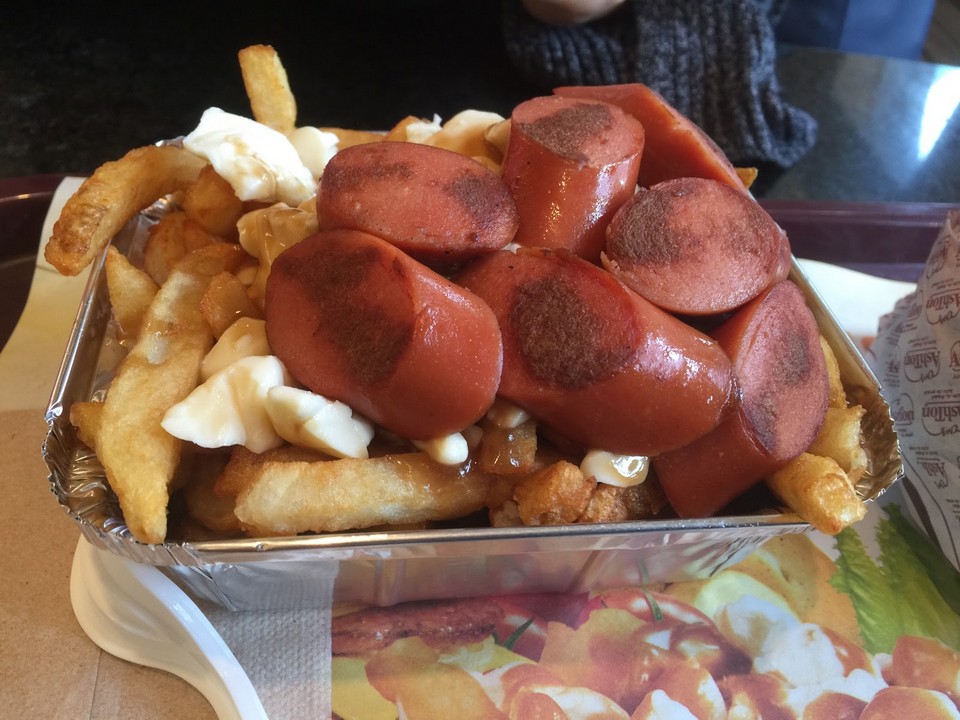
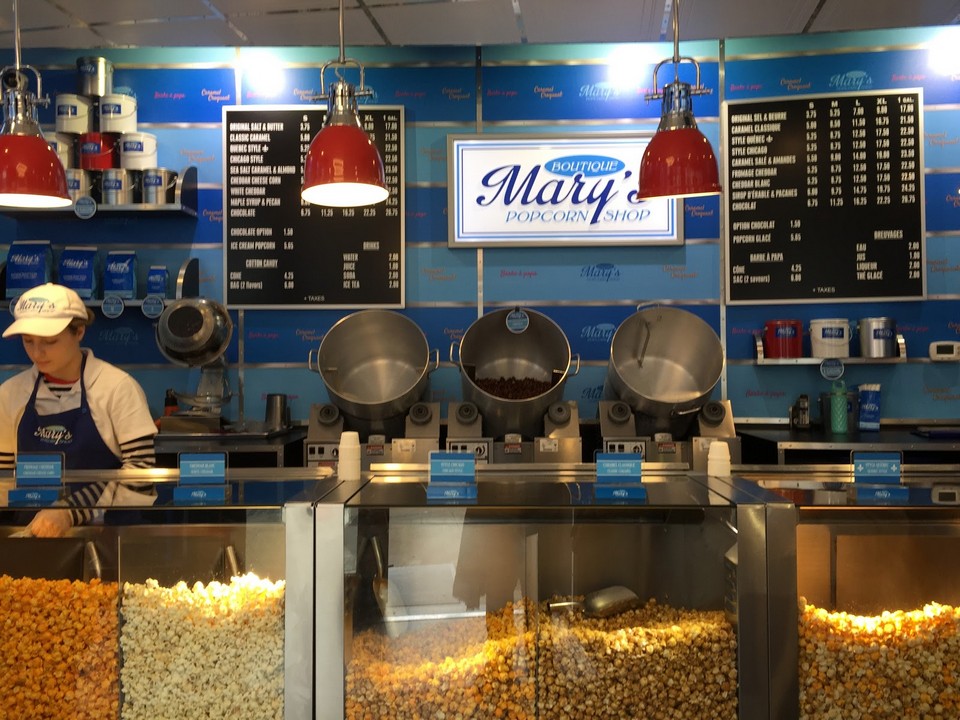
A special thing when it comes to Quebec is Poutine and Smoked meat. If we don’t mention these two delicacy, it’s a mistake. My favorite are the two restaurants: Phil Smoked Meat (Address: 461 Rue Saint-Joseph E, Québec, QC G1K 3B6, Canada/Hours: 11AM–9PM; Monday; Sunday: Closed). And Fabrique Du Smoked Meat (Address: 727 Raoul-Jobin St, Quebec City, Quebec G1N 1S1, Canada/Hours: 11AM–8PM; Monday; Sunday: Closed). Both bars have their own character, only Fabrique Du Smoked Meat is a bit remote, but its atmosphere is most local.
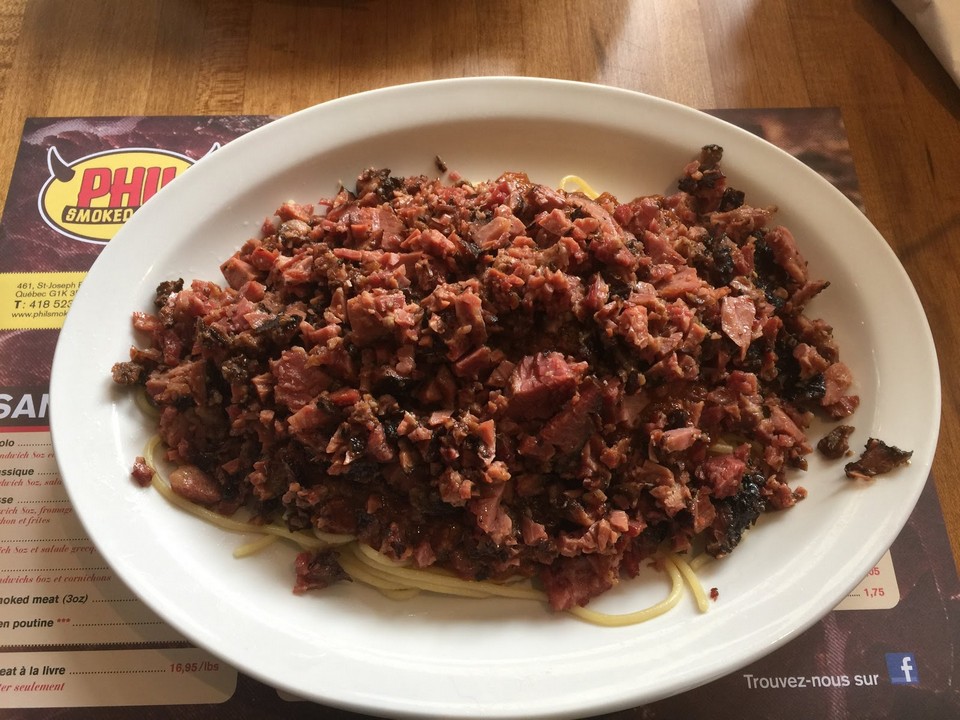
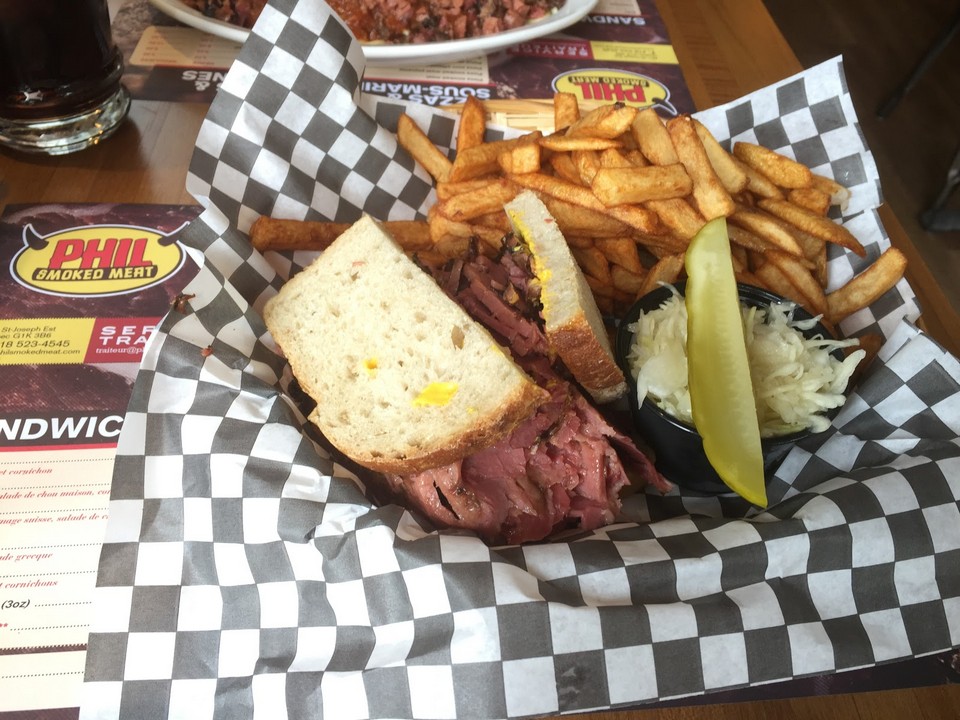
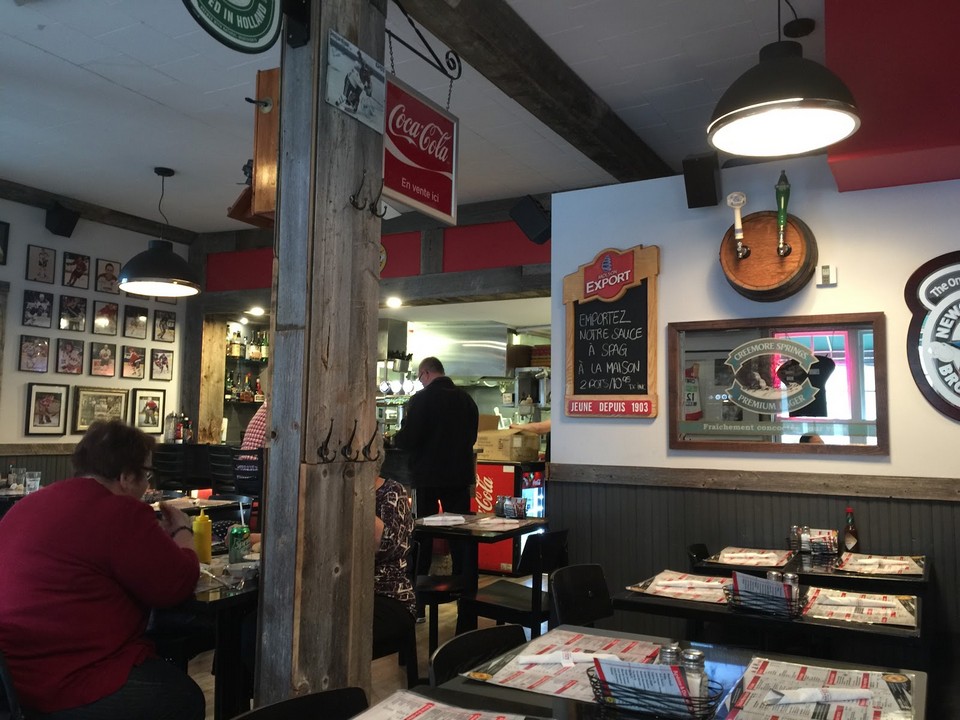

Chez Muffy (Formerly Le Panache): A seaside restaurant dating back to the 19th century. If you are a foodie, you absolutely must not miss this stop. Including more than 700 brands and cellars, more than 12,000 bottles are imported. Desserts here are also very good, but mainly sweets, suitable for diners with a sweet tooth.

If you want a true Canadian meal, then head to La Traite (Address: 5 Pl. de la Rencontre, Wendake, QC G0A 4V0, Canada), a restaurant that features a menu featuring local ingredients, notably sugar syrup.
Quebec city blog: Where to stay?
When you come to Quebec City, you can rent a small hotel in the heart of the city, travel will be much more convenient. Prices range from $50 and up. Otherwise, you can also use the Airbnb service to experience the feeling of staying at a local’s house. If you can stay at Airbnb, you can save money by going to the market to cook for yourself.
Below we recommend more best budget, mid-range and upscale hotels with good ratings and reviews you can refer to.
- Fairmont Le Chateau Frontenac (Agoda.com or Booking.com)
- Hotel du Vieux-Quebec (Agoda.com or Booking.com)
- Auberge Saint Antoine (Agoda.com or Booking.com)
- Hotel Manoir Victoria (Agoda.com or Booking.com)
- Best Western Premier Hotel Aristocrate (Agoda.com or Booking.com)
Check out more top hotels in Quebec City on Agoda.com or Booking.com.
Quebec city travel guide: Things you should note before traveling to Quebec
- You don’t need to know French when traveling in Quebec.
- Quebec people are usually very nice when you try to ask for directions in French. After I asked, they all answered in English :))
- Quebec City is a bit small, you just need spend about 2-3 days is enough.
- Eating far away is usually delicious and cheaper than right in the center.
- When I visited Quebec at the end of April, the weather was often drizzly, but the view was still beautiful. If I have another chance, I will come in autumn or winter. At that time, I will stay at the hotel made of ice (Hotel de Glace), experience dog sledding…
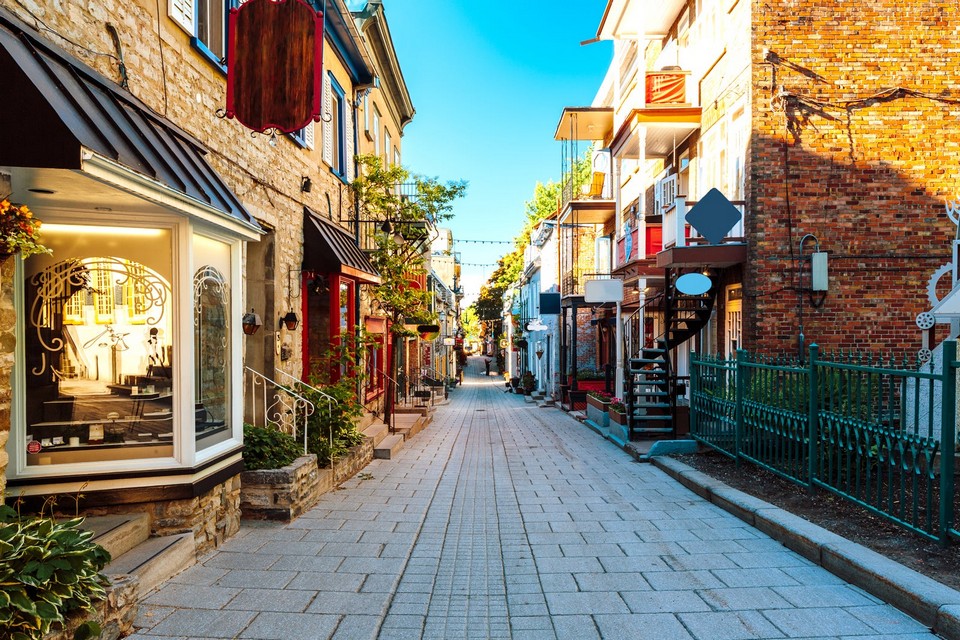
Happy traveling! Read more Canada travel guide here.

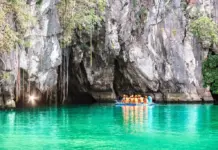






























![10 best airports in Asia in 2016 [RANKED] kuala-lumpur-international-airport-best airports in asia in 2016 by skytrax ratings](https://livingnomads.com/wp-content/uploads/2016/08/29/kuala-lumpur-international-airport-best-airports-in-asia-in-2016-by-skytrax-ratings-218x150.jpg)








